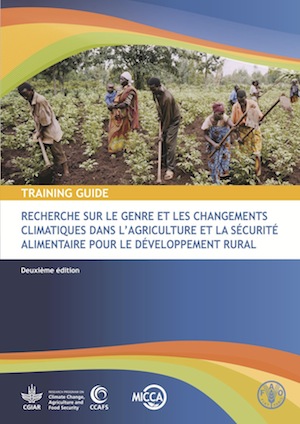Training guide: gender and climate change research in agriculture and food security for rural development
Abstract
It is widely accepted that agricultural development will be severely curtailed without addressing the risks and capitalizing on the opportunities posed by climate change (FAO, 2010b). The agriculture sector must adapt to the impacts of climate change in order to provide food security to the world’s growing population. At the same time agriculture must mitigate its contributions to climate change (13.5 percent of global greenhouse gas emissions) in order to slow the progression of this global challenge (FAO, 2009).
Concurrently, it is internationally recognized that addressing gender issues in agriculture reduces hunger and poverty. In fact, it is estimated that more than 100 million people could be lifted out of poverty if women had the same access to and control of resources as men (FAO, 2011a). Although they are important food producers and providers, women presently have limited access to and control of resources. However, to date, these ideas – that climate change and gender issues are integral parts of agricultural development – have not been implemented in an effective way.
This guide seeks to fill that gap by supporting work to investigate the gender dimensions of responding to climate change in the agriculture and food security sectors. The final goals are to improve food production, livelihood security and gender equality in the context of the changing climate.

